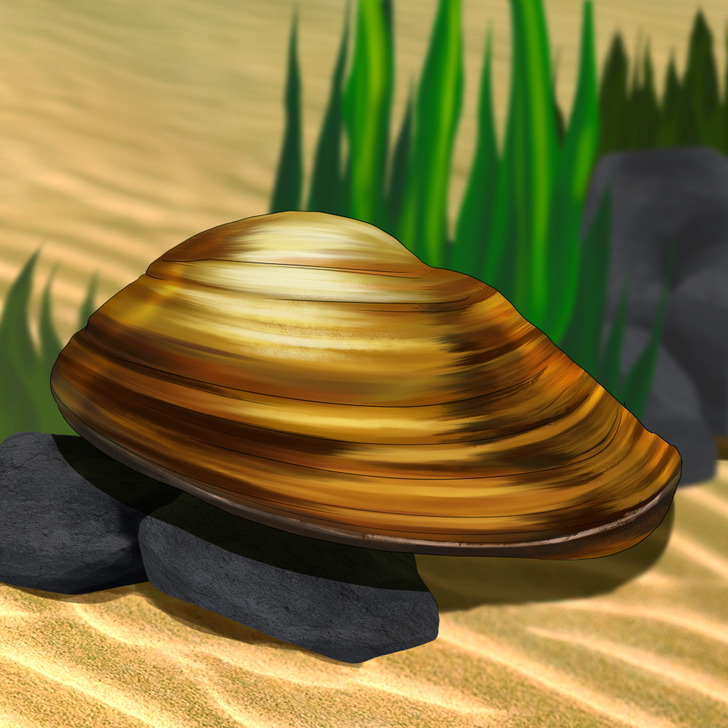How Deep Various Fish and Other Sea Creatures Live
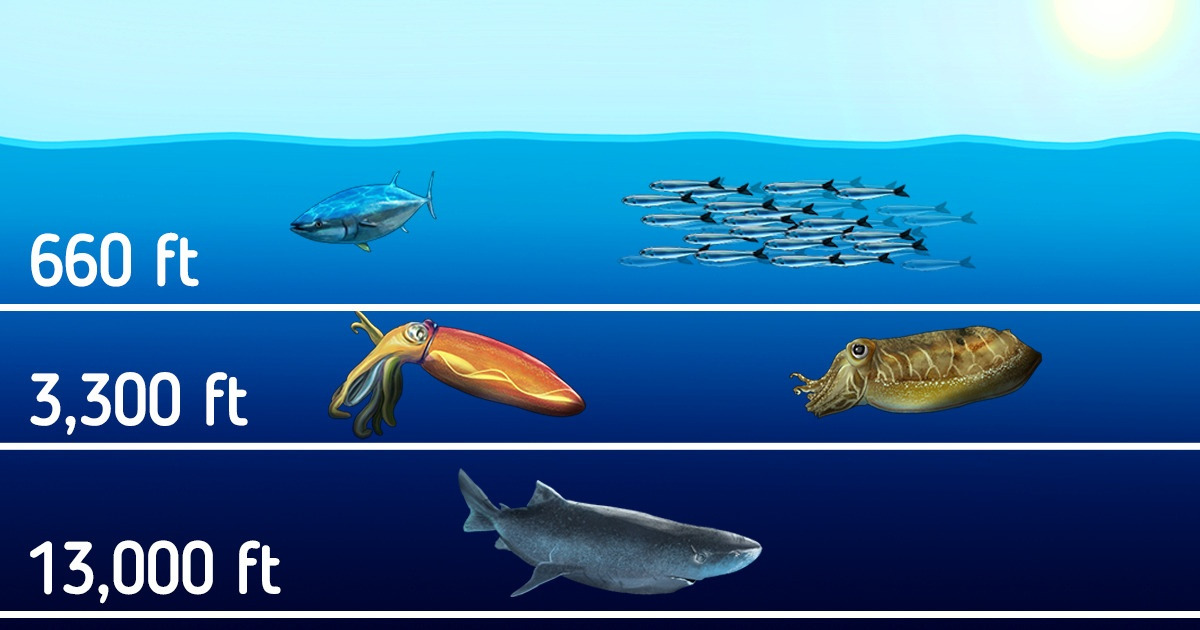
It’s no secret that fish, crabs, turtles, and cuttlefish live in water. However, among sea creatures there are those who prefer to stay closer to the bottom and those who live on the surface of the water.
5-Minute Crafts is telling you how deep different inhabitants of seas and oceans live.
The depth of the ocean
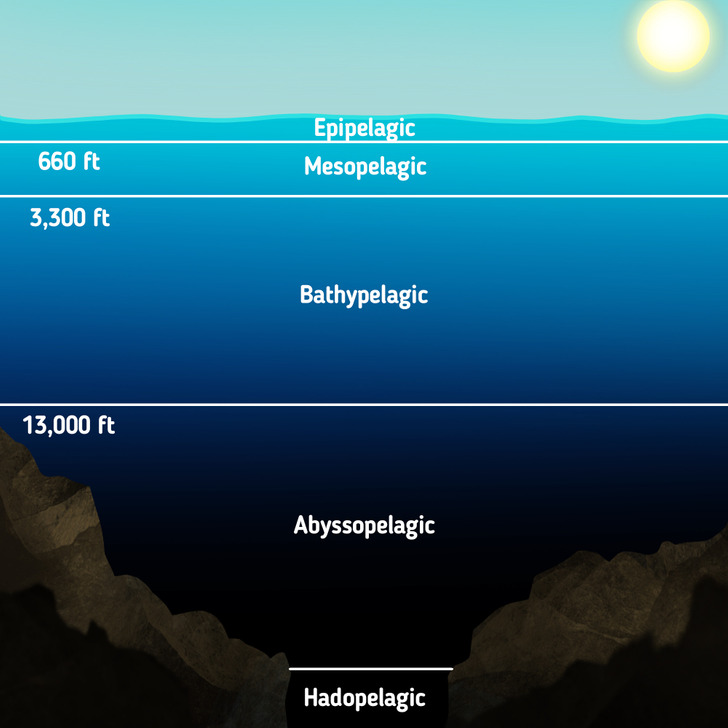
Scientists divide the ocean into 5 main zones depending on the depth. They are called epipelagic, mesopelagic, bathypelagic, abyssopelagic, and hadopelagic zones. Each of these layers has a different temperature, lighting, and pressure as well as different water composition like different indicators of salinity, oxygen levels, and concentrations of various trace elements.
Therefore, live creatures who inhabit these layers will be different too — we shouldn’t expect that fish that are used to living in well-lit and warm upper layers will feel comfortable in the bottom layers of the water. We are going to talk about the residents of each of these layers in more detail.
Epipelagic zone
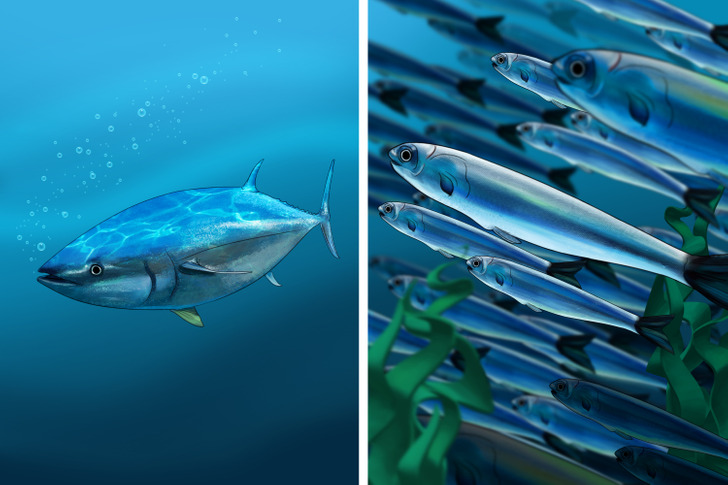
The Epipelagic zone stretches from the water surface down to around 660 ft. This is the most sunlit part of the ocean where many photosynthetic organisms, that is, those who can convert sunlight into energy necessary for life, live. Many algae such as sargassum, various fish such as herring, anchovy, tuna, whale shark, and mammals such as dolphins live in the epipelagic zone.
Mesopelagic zone
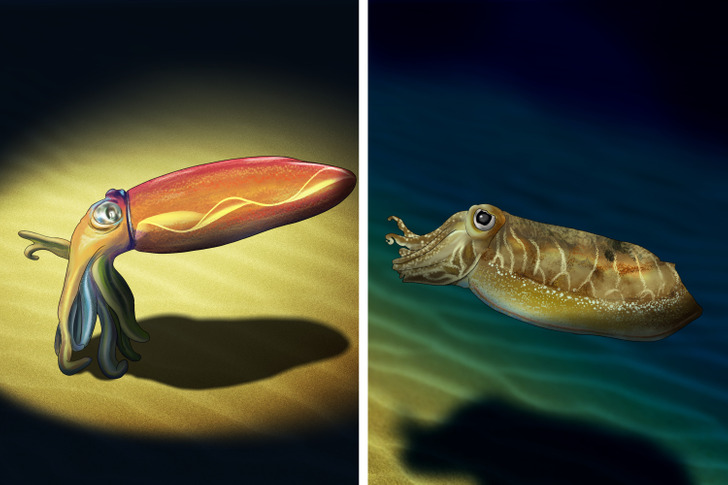
This is a so-called twilight zone. There is very little sunlight that reaches it. Many inhabitants of the mesopelagic layer have quite big eyes. This zone stretches from 660ft down the water surface to around 3,300 ft. The pressure in this layer increases by 1 atmosphere every 10 m, while the concentration of nutrients drops. Nevertheless, 90% of all world fish (and this is about 10 billion tons) live here. Mesopelagic is the habitat for organisms such as squid, cuttlefish, and fish (eg, Antarctic toothfish).
Bathypelagic zone
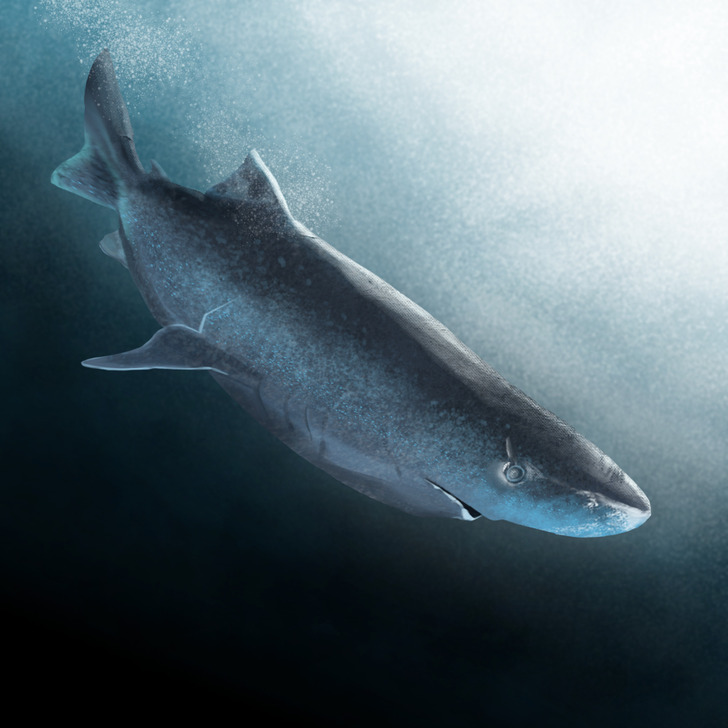
This area is already completely deprived of the sun, moon, or stars’ light. But still, you can see a glow there because some organisms living here are bioluminescent. The bathypelagic zone stretches from 3,300 ft down to around 13,000 ft. This zone has an enormously strong pressure, while the level of oxygen is very low.
The typical inhabitants of these waters are black hagfish, viperfish, anglerfish, and sleeper sharks. The inhabitants of this zone have learned to adapt to specific conditions. For example, they have a slow metabolism, as well as a non-specialized diet. In other words, they eat everything that they comes across, without much choice. In addition, they prefer not to waste energy on tracking down prey, but wait until it comes nearby.
Abyssopelagic zone
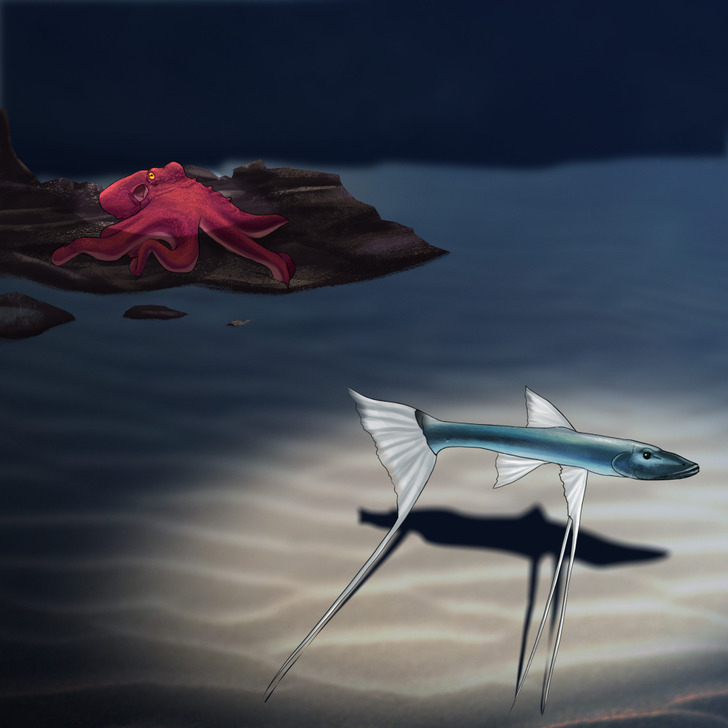
The abyssopelagic is the space from 13,000 ft down to above the ocean floor. The name comes from Ancient Greek ἄβυσσος (“bottomless”) — a holdover from times when the ocean was believed to be bottomless. The sea cucumber, sea spider, tripod fish, and octopus are among the few living creatures that can survive at such a low temperature, enormous pressure (600 times higher than normal), and in total darkness.
Hadopelagic zone
